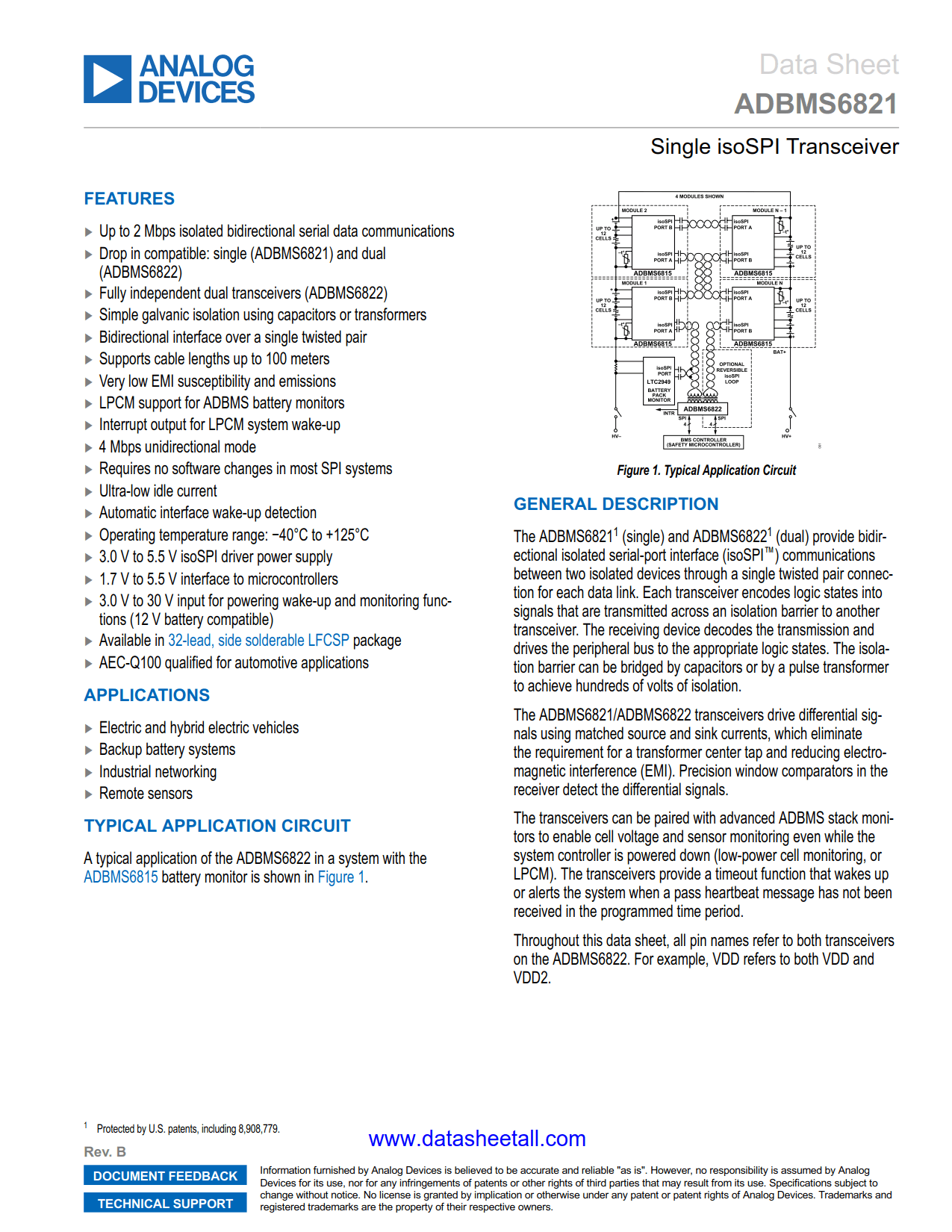
ADBMS6821 Datasheet
Single isoSPI Transceiver

Single isoSPI Transceiver
| Part No. | In Stock | Price | Packaging | SPQ | Marking | MSL | Pins | Temp Range | Package Description |
The ADBMS6821 (single) provide bidirectional isolated serial port interface (isoSPI™) communications between two isolated devices through a single twisted pair connection for each data link. Each transceiver encodes logic states into signals that are transmitted across an isolation barrier to another transceiver. The receiving device decodes the transmission and drives the slave bus to the appropriate logic states. The isolation barrier can be bridged by capacitors or by a pulse transformer to achieve hundreds of volts of isolation.
The ADBMS6821 transceivers drive differential signals using matched source and sink currents, eliminating the requirement for a transformer center tap and reducing electromagnetic interference (EMI). Precision window comparators in the receiver detect the differential signals.
The transceivers can be paired with advanced Analog Devices, Inc., battery stack monitors to enable cell voltage and sensor monitoring even while the system controller is powered down (low power cell monitoring, or LPCM). The transceivers provide a timeout function that wake up or alert the system when a pass heartbeat message has not been received in the programmed time period.